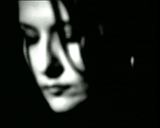
 Author of all texts
about mythology on
these web-pages is
Lidija Bajuk:
Author of all texts
about mythology on
these web-pages is
Lidija Bajuk:
|
lidija.bajuk@posluh.hr
scena.hgu.hr/lidija-bajuk/
- The Sky
- The Mountain
2. PERUNIKA
- Leluya
- Ball lightning
3. AQUARIUS
- Candlemen
WATER MAID
- Fairies
- Witches
4. DRAGON
- Water
SNAKE
- Bogorodica
(Rainbow)
5. GREEN GEORGE
- The Moon
- Corn Spirit
6. LEPA MARA
- Hair
- Embroidery
7. GRABANCIJAŠ
- Light
8. PESJANEK
- Forest
9. LITTLE RED HAT
(DWARF)
- The Cap, Little Hat
10. STRAHE & MRAKI
(GIANTS)
|
RED HAT
(ČRLJENA KAPICA, BERGAMANDL, ČOVJEČULJAK(little man), KEPEC,
MAGAŠ/MOGAŠ(EC), MA(SMA)LIĆ/MAL(J)IK/MALIS, MALI S CRVENOM KAPICOM NA
KONJU (the little fellow with a red hat on a horse), MALJENICA,
MANJAK, MOGUT, PALČEK, PALČIĆ (dwarf), PAPRIŠEK, PATICVRK, PATULJAK
(dwarf), PATULJICA (female dwarf), PEDALJ ČOVEK - LAKET BRADA,
STARMALI, TINTILIN)
|
|
metimes it is the animal they helped earlier to prepare food for the winter or find its young, saved it from traps, cured it with medicinal herbs they know very well. If this happens, they can become dangerous and vengeful, waiting for the one who did hem wrong and imprisoning them in a large cage from which they will be released when they guess the answer to the riddle. Dwarfs help all the good people when they are in some kind of trouble. They offer the evil ones who have imprisoned them gold, although they know it will not bring them happiness. They speak very fast so it is sometimes difficult to understand them and they speak in riddles. Their senses are very sharp, although their vision is not so good in daylight. That is why they are prudent, clairvoyant and fast as rabbits, so they rarely fall prey to owls, skunks and fish, which want to catch them. They can sometimes change form and turn into small animals. There is a folk story of dwarf hunters ("jagari"), little foresters, night hunters. They are not hunters that kill animals, they are more similar to the mythical Green George who hunts the one he loves embodied in the form of a forest animal. They can find underground water, coal and treasure using a forked branch. They are owners and keepers of mines (coal mines, salt mines, goldmines, jewel mines). It was believed that, where a bearded dwarf with a lamp on the mountain Bilogora appears, the rocks will slide. Miners marked these places with a cross as a warning. Dwarves are immortal. They live about four hundred years. This is how long the cult trees live, because they represent them. It was recorded that the longest living European dwarf lived five hundred and fifty years somewhere on the Adriatic coast feeding on sour milk and olives every day. Dwarves are talented for music. They like playing and dancing, especially in circles. Depending on their dwelling place and their trade there are different kinds of dwarves like house dwarves, garden dwarves, field, forest, mountain, sea and sand dwarves. An Albanian folk tale was recorded of Snow White and dragons instead of dwarves. (Snakes are also bearded and sleep on the fleece.) All of these little people ("malci" or "malići" as they are called in Primorje) are in some way similar to some other Croatian mythical creatures, like candle-bearers, giants or dragons. They actually have the same origin. They are demons of nature, their beardedness and hairiness is the symbol of the sunrays, i.e. plants. Their hat is a sign of their noble birth. Their red hat and lamps and candles and the choice of their trade show their connection to the fire. Their homes are in shady, dark and underground places. They eat similar food. They are strong. They understand the mute language and have mysterious knowledge often recorded in special books. They are owners and keepers of treasure. They like music and dance in circles. They award the good and punish the evil. Sometimes they are accompanied by a horse or a cow or drive a carriage. They are handy with tools and weapons, etc. Physical deformity was often connected with wisdom and wit and therefore fools and hunchbacks were often close with dwarves in some way, like keeping their secret, etc. In general, small creatures from stories represented a deity that lost its positive powers because of the power of the storm, cold, darkness, hunger, disease and any other misfortune or a diminished male principle. Diminutives people use to name them, like "boužik" and "boužiček" which mean "the poor one", are a proof of it. Croatian mountains Malicka near Topusko and Maletić near Karlovac are named after them. |